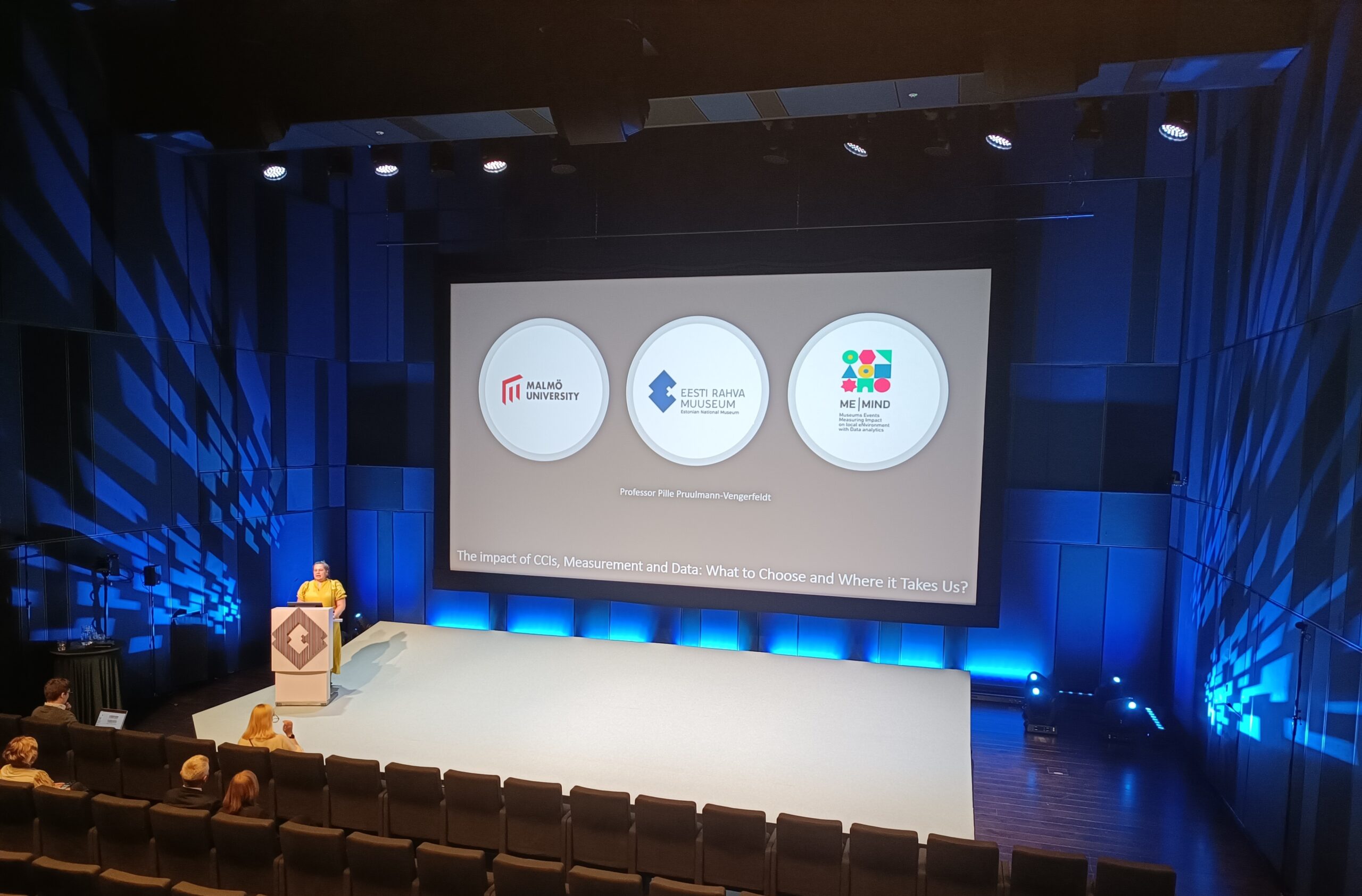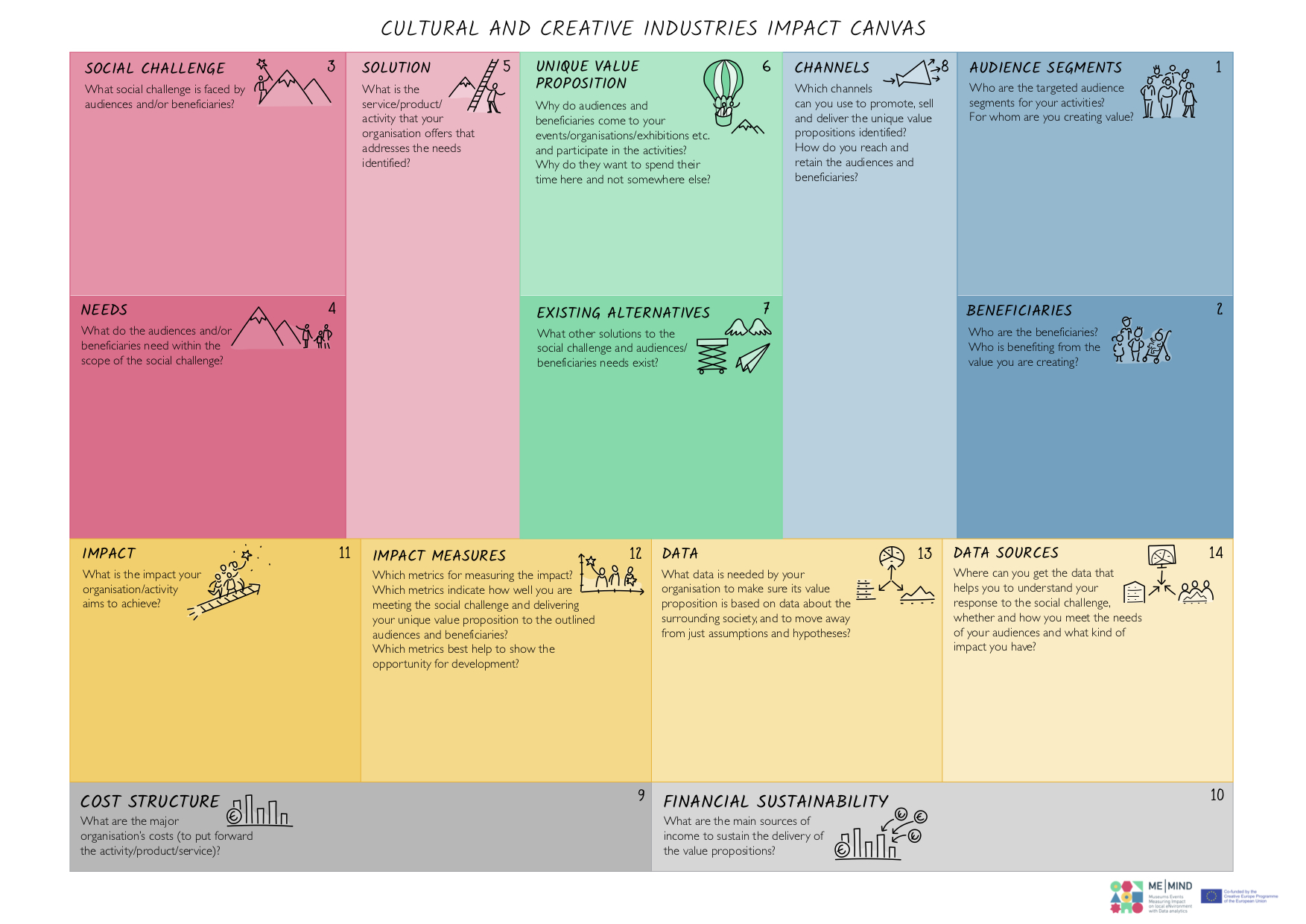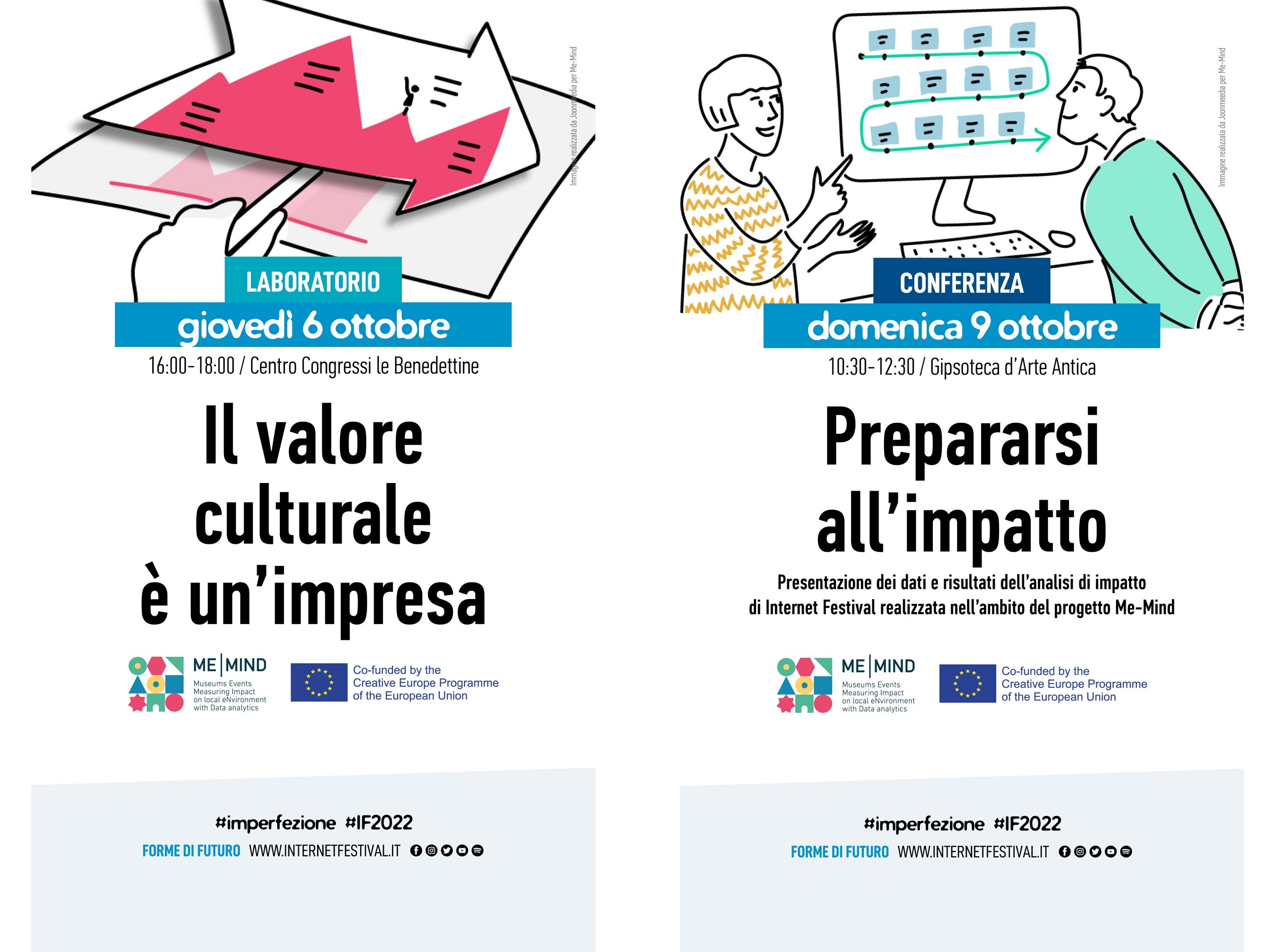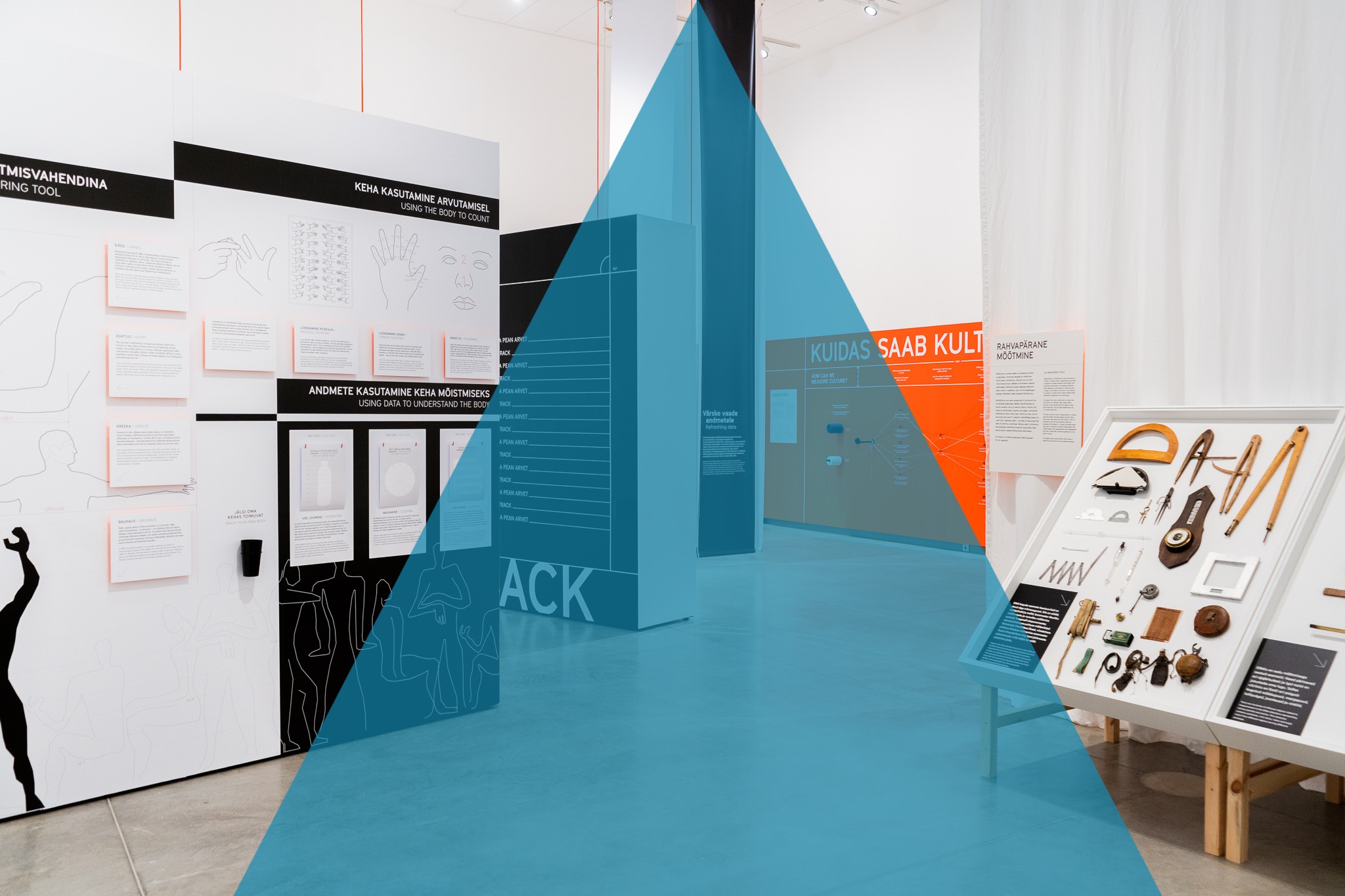Summary of the invited presentation at Relevance 2022 conference in Estonian National Museum
Me-Mind project is seeking to find out measures for understanding impact of the cultural and creative industries. Estonian National Museum and Pisa Internet Festival have been case studies around which we are reflecting about the questions of how to best measure and understand the impact in our data-rich worlds. On the one hand, there seems to be plenty of data, collected by public and private actors, clumped together with a promise to capture what counts.But CCIs are not the only ones trapped by the question of impact. Research funding agencies all over the world are looking for good ways of showing impact of research, similarly intangible and ephemeral, influencing us over long term and their influence is often hard to disentangle from all the other aspects.
Museums have previously also sought to understand their impacts, identifying, for instance, a social impacts map, that covers a range of impacts clustered to be societal or individual, intrinsic or instrumental.
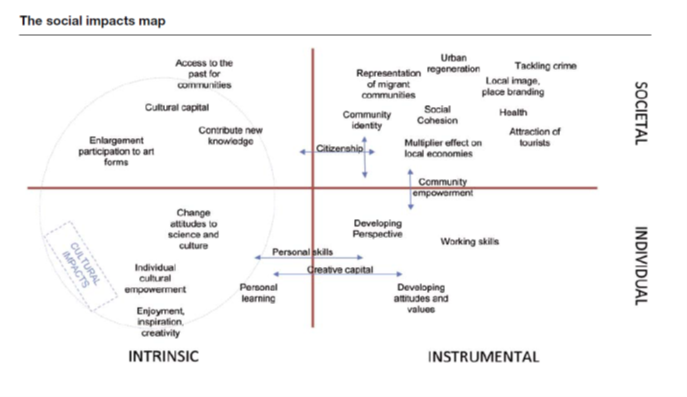
An example of social impacts map. To know more please download here the full report of LEM – The Learning Museum and Emilia-Romagna Region
But many other institutions in society will also want to claim ability to impact the same space – schools, literature, urban development, governmental and non-governmental institutions. In the space of multiple actors, it is hard for the CCIs to try to distinguish their role from the role and impact of others. And while one critical way to go about it would be to ask – does it matter? Is it not enough that we know that impact is there, even if we don’t know precisely how large and how did we get there? Or we can go about trying to tease out some data to see if we are making impact.
Me-Mind project has been looking at data as a way to show some impact. Our data inventory led us to sort through seven UNESCO inspired groups of indicators – looking for data about direct and indirect economic indicators, at educational, governance, heritage, equality, social participation and communication as areas where CCIs are making an impact. After identifying 97 indicators we stopped – there is more data, there are more questions to be teased out, but the question is, can we make anything valuable with the data and the indicators we have.
Because what also has become evident from our processes so far are that we can’t always read the data that we have. And not always is the data we have access to a good measure of the things we need to know. We need to be able to critically discuss the trustworthiness of the data we have – how was it collected, for whom was it collected, does it really stand for what we hoping it should stand for? But also, to which extent does creative or playful engagement with data and also cultural data help us to get closer to understanding the impact. We explore this further at our exhibition Number Fascination – A reflection on data and measuring.
To conclude, I invite all of us to reflect on the following issues. Do we always understand the difference between primary and secondary data, between quantitative and qualitative data? Reflecting on why the data were collected and what kind of insights it tries to give us. Data are not generic and taking out of its context it does often lose its meaning. Context remains critical to understand what data tries to tell us. We also need to understand and reflect on the difference between what is been done and what impact it might have. When we measure our own activities, our outputs, it is not the same as the impact we get. Yet, there is nothing wrong in keeping a detailed track of our own achievements and outputs as we might be able to relate these activities to our impact in a more indirect ways.
Cultural and Creative industries collect a lot of data, they often report to funders, governors etc. but not always are these data used for internal development work and planning, nor is it used to validate our ideas about impact and relevance. We can start by critically investigating the data we have and gather insights we can rom that. We can also investigate the data other people collect around us. Does that data have interesting insights that help us to understand our position in society? However, while investigating secondary data, we need always to consider the context in which secondary data is collected – whose interest does it serve? As data is never neutral, it is always captured for specific purposes, and thus comes with limitations and conditions. We need to be critically aware of the premises of the data we use for our purposes. So to conclude – instead of providing a silver bullet solution to our ponderings about impact and relevance, data will leave us with questions and challenges that need further investigations, and reflections.
The article is part of Pille Pruulmann Vengerfeldt’s speech at the Relevance 2022 conference hosted by Estonian National Museum.
It is possible to watch the full speech on the Youtube channel of the museum here.

